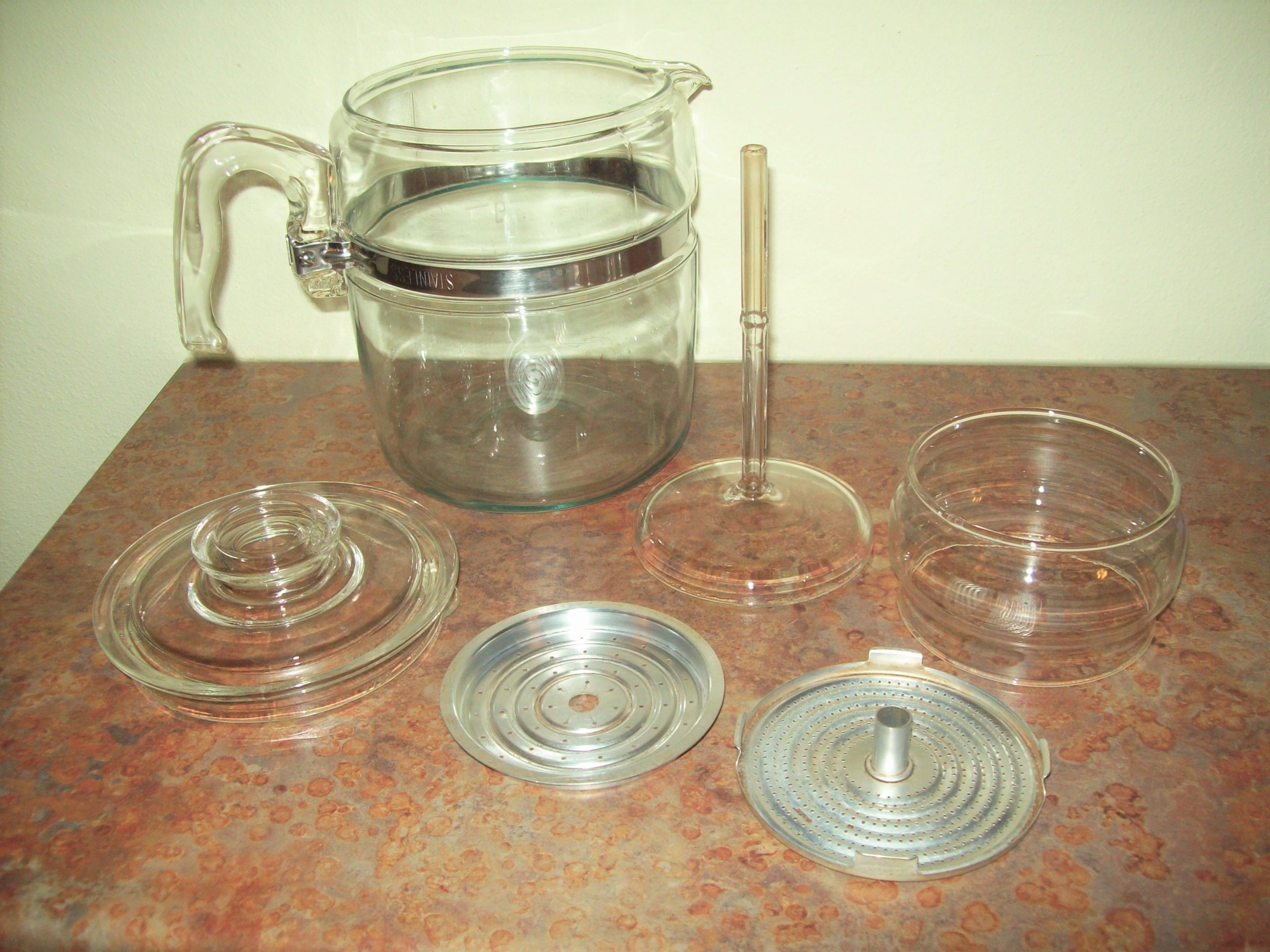
Shopping thrift stores, flea markets and estate sales can be overwhelming. With the sheer volume of stuff, how do you know where to start? How do you spot gems amid all the … well, junk?
As a professional reseller who’s been combing through thrift stores for the better part of 30 years, I can help. If you’re ready to cut your shopping time in half, score bigger bargains or walk away with brag-worthy finds you can flip for cash, read on.
From hard-to-find household items to resale money-makers, everything featured in this series qualifies as a BOLO (Be On the Look-Out for) item. When you find it, buy it!
Featured find: Pyrex Flameware percolator
Coffee lovers, this one’s for you. Long before Mr. Coffee and Keurig, many Americans brewed their coffee on the stove using a glass percolator made by Pyrex. Sold under the sub-brand Flameware, this new type of stovetop-safe glass was introduced in the 1930s.
Though Flameware’s line included frying pans, saucepans and teapots, its percolators have developed a cult-like following among coffee enthusiasts around the world. Some collectors swear that the nearly all-glass construction brews a superior cup of coffee. Others simply love Flameware’s retro, slightly sci-fi look.
Luckily for thrift shoppers like you and me, these classic coffee makers can still be spotted “in the wild.” I find two to three percolators a year — some complete, some missing a few pieces — usually priced between $ 3.99 and $ 6.99 each.
Why buy it?
Percolation is the brewing method of choice for many coffee connoisseurs. With drip coffee makers or pour-over systems, hot water touches the coffee only once. But percolators cycle water through the coffee grounds multiple times, extracting more natural oils and creating a more robust cuppa joe.
For budget-conscious brewers, percolators also offer two practical advantages:
- There are no paper filters to buy. That means one less thing on your shopping list and one less waste product headed to the landfill.
- Stove-top percolators like Pyrex’s Flameware have no moving parts or internal heating elements to wear out. With proper care, these simple devices can last for generations. That’s why they end up in thrift stores instead of dumpsters. Just imagine never having to buy another coffee maker again!
If reselling is your game, Flameware percolators are a solid investment. Manufactured in 4-cup, 6-cup and 9-cup sizes, all models are in-demand. A 9-cup percolator recently sold for $ 71 on eBay. And this 6-cup model sold for an extra-hot $ 89.95. Not a bad way to … ahem, mocha buck.
If you find an incomplete percolator, buy it anyway. Every piece of a Flameware coffee maker has resale value. A carafe with lid can sell for as much $ 40, and carafe handles sell for $ 8 to $ 10 apiece.
What to look for
Flameware percolators are easy to spot. With all but two pieces made of glass, they look like they belong in a science lab instead of a kitchen.
Confirm your find by checking the underside of the carafe. The Flameware logo features a stylized flame with the brand name “Pyrex” and the model number below it.
If you’re buying for personal use, make sure all pieces are present and accounted for. A complete percolator includes the following six components:

- Glass carafe
- Glass carafe lid
- Glass filter basket
- Aluminum basket lid (in my experience, this is the most commonly missing piece)
- Aluminum basket bottom strainer
- Glass percolator pump or “stem”
Remember, Pyrex is durable, but not indestructible. Before you buy, carefully check all glass parts for damage. Chips and cracks most commonly appear in the spout of the carafe, the carafe lid and the percolator pump.
Pro tip: Some Flameware pieces have a cloudy look to the glass. This is caused by either hard water build-up (fixable) or repeated exposure to high heat and heavy detergents in a dishwasher (not fixable).
Test by scraping a small area of the glass with your thumbnail. If the film comes off, the piece can be cleaned with a long soak in distilled white vinegar. If not, the damage is heat- and detergent-related and probably permanent.
Disclosure: The information you read here is always objective. However, we sometimes receive compensation when you click links within our stories.



